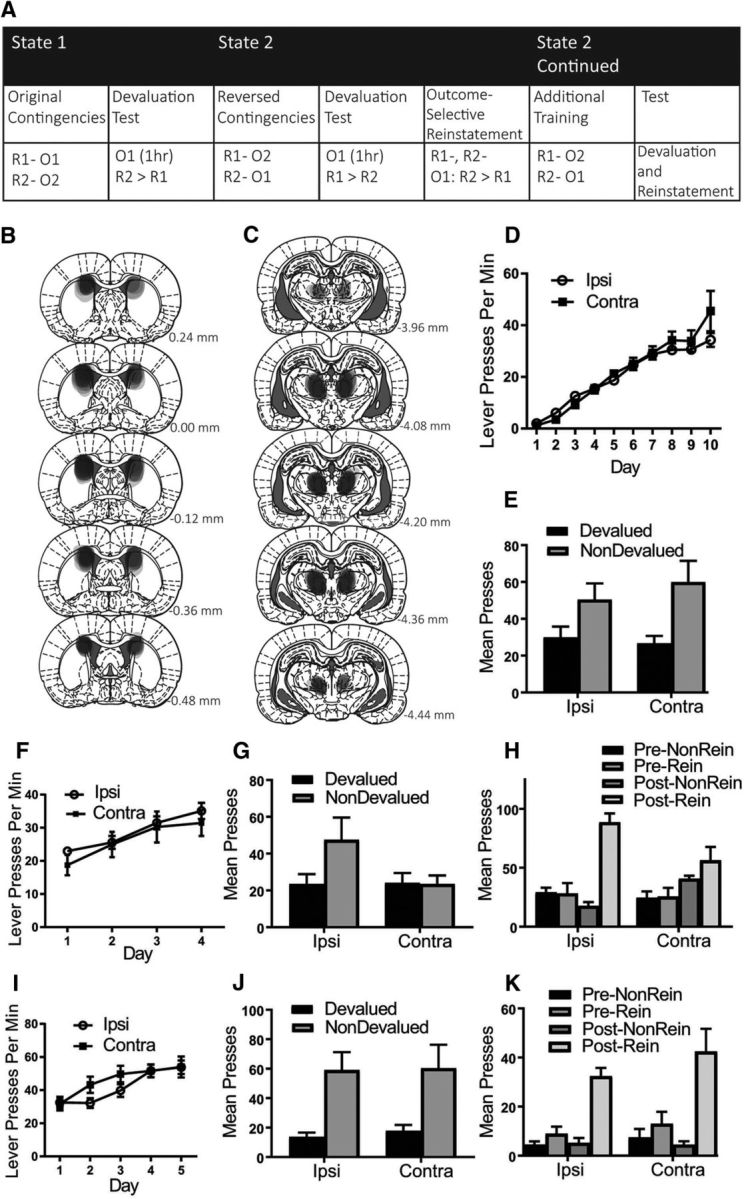Figure 1.

Experiment 1: Extended training rescues the reversal deficit in animals with a dysfunctional PF–pDMS connection. A, Rats were first trained to press two levers for two separate outcomes under the initial state, State 1, and then tested in devaluation. During the proposed switch to State 2, animals were trained on the reverse of these contingencies and then tested again in devaluation and reinstatement. Rats then received additional training on the reversed contingencies and were tested again. B, C, Representation of lesion placements showing each overlapping cytotoxic lesion for pDMS (B) and PF (C). D, Mean lever presses per minute (±1 SEM) during acquisition of the lever press response. E, Mean total presses (±1 SEM) during devaluation testing of the original contingencies. F, Mean lever presses per minute (±1 SEM) during acquisition of the reversed contingencies. G, Mean total presses (±1 SEM) during devaluation testing of the reversed contingencies. H, Mean total presses (±1 SEM) during outcome-selective reinstatement testing of the reversed contingencies. I, Mean lever presses per minute (±1 SEM) during additional training of the reversed contingencies. J. Mean total presses (±1 SEM) during devaluation testing of the reversed contingencies after additional training. K, Mean total presses (±1 SEM) during reinstatement testing of the reversed contingencies after additional training. R1, Response 1; R2, response 2; O1, outcome 1; O2, outcome 2. Group IPSI, n = 10 and Group CONTRA, n = 10.
